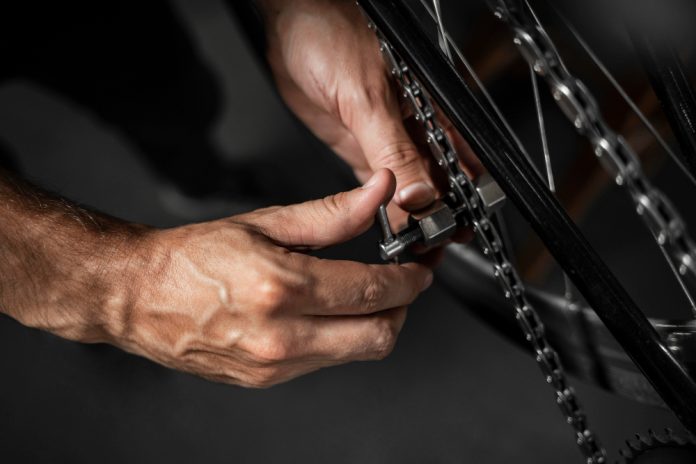Overview
Your bike chain is the heartbeat of your ride – the silent workhorse that keeps you moving forward, whether you’re tackling steep climbs, cruising city streets, or venturing on long road trips. Over time, friction, dirt, and exposure wear down even the toughest chains, affecting performance and efficiency. Riders often underestimate how critical regular inspection and timely replacement of a bike chain can be. Neglecting it leads to poor gear shifting, increased wear on the drivetrain, and a costly repair down the line. If you’ve noticed stiffness, skipping, or extra noise during rides, your chain may be due for attention.
This guide walks you through everything you need to know about maintaining your bike chain, from identifying wear signs to choosing the right replacement interval. By the end, you’ll know how to extend your drivetrain’s lifespan and ride smoother for longer. And if you ever find yourself stuck with a snapped or jammed chain on the road, remember that Crossroads Helpline offers prompt roadside bike assistance. Let’s dive into the world of proper chain care – because a well-kept chain means a more reliable ride.
Things to Know Before You Replace Your Bike Chain
Before you even think about swapping out your old chain, it’s essential to understand the components and factors that influence chain wear. Not every chain deteriorates the same way; it depends on riding conditions, maintenance habits, and even the type of drivetrain your bike uses. By getting familiar with these fundamentals, you’ll make better decisions about timing and care.
1. Understanding How a Bike Chain Works
A bike chain transfers power from the pedals to the rear wheel, turning your energy into motion. It consists of interlinked plates, pins, and rollers that mesh precisely with your cassette and chainrings. Over time, these links stretch due to metal fatigue and friction, leading to poor engagement and gear skipping. Regular lubrication and inspection are vital to maintaining efficiency and preventing chain slippage.
Think of your chain as a precision component. Even a minor misalignment can affect the entire drivetrain’s harmony. When neglected, stretched links start to wear down the teeth on your cassette and chainrings unevenly, leading to costly replacements. That’s why understanding how your chain functions gives you insight into how to preserve its condition and keep your ride smooth.
2. The Role of Chain Lubrication
Lubrication is your chain’s first defense against wear and corrosion. A dry chain increases friction, accelerates wear, and wastes pedaling energy. On the other hand, an over-lubed chain attracts dirt and grime, forming a gritty paste that acts like sandpaper. Using the right lube type for your riding conditions is key to extending your bike chain’s life.
Wet lubes work best in rainy or muddy environments, while dry lubes are ideal for dust-free roads. Apply lube sparingly and wipe off excess to prevent dirt accumulation. Consistent lubrication schedules reduce chain noise, improve shifting, and keep your drivetrain running smoothly. Remember, a properly lubricated chain isn’t just quieter – it’s significantly more efficient.
3. Measuring Chain Wear Accurately
A simple chain checker tool can save you from guessing when it’s time to replace your chain. Chain wear, also known as elongation, occurs when internal link components wear down. Using a chain wear indicator or ruler helps determine whether the chain has reached its limit.
Insert the tool into your chain; if it drops fully into place, your chain is stretched beyond safe limits. Typically, a chain showing 0.5% to 0.75% elongation should be replaced before it damages the cassette. Regular measurement ensures you act early and avoid more extensive drivetrain damage. Monitoring wear helps maintain shifting precision and prevents costly overhauls.
4. Impact of Riding Conditions on Chain Life
Not all rides are created equal. Wet, muddy, or sandy environments accelerate chain wear dramatically, while clean, dry roads allow your chain to last longer. Riders who commute daily or tackle trails should expect faster wear rates. Cleaning and lubricating your chain after every few rides can double its lifespan.
When exposed to grime or salt, chains corrode and seize faster. Regular post-ride cleaning with degreaser and a soft brush removes contaminants and ensures smoother operation. Understanding how your typical riding conditions impact chain longevity helps you tailor maintenance to your habits, ultimately saving money and hassle.
5. Choosing the Right Replacement Chain
When the time comes for replacement, choosing the correct chain for your drivetrain speed and type is crucial. Modern bikes use different chain widths depending on whether they are 8, 9, 10, 11, or 12-speed.
Always match your new chain to your cassette speed and brand for optimal performance. High-quality chains often come with anti-rust coatings and durable link designs, which can handle frequent use. Consulting your bike’s manufacturer guidelines or a professional mechanic ensures you select the ideal fit. A mismatched chain can lead to poor shifting or early wear.
Step-by-Step Guide: How to Replace a Bike Chain
Replacing a bike chain isn’t as intimidating as it sounds. With the right tools and patience, any rider can handle this essential maintenance task. Following a systematic process ensures a clean installation and prevents drivetrain issues.
1. Gather the Required Tools
You’ll need a chain breaker tool, master link pliers (if applicable), and a chain wear checker. Having bike grease and rags handy makes the process cleaner and smoother.
A proper setup prevents frustration and mistakes. Keeping tools organized and accessible saves time. Whether you’re in your garage or on the road, preparation ensures you can replace your chain efficiently and safely.
2. Remove the Old Chain
Shift your bike into the smallest chainring and cog to relieve tension. Use your chain breaker or master link pliers to disconnect and remove the chain.
Once removed, inspect your old chain for wear patterns and grime buildup. These signs offer insight into how your maintenance habits affect longevity. Cleaning your drivetrain before installing a new chain ensures better performance.
3. Size the New Chain Correctly
Lay the old chain alongside the new one to match the length, or refer to your bike’s manual. Cutting too short or too long can cause drivetrain issues.
Use your chain breaker tool to remove extra links. Ensure your new chain has the proper tension once installed. An accurately sized chain ensures smooth shifting and prevents premature wear on the cassette.
4. Install and Secure the New Chain
Thread the new chain through the derailleur and drivetrain components. Connect the ends using a master link or chain pin. Ensure the link clicks securely into place.
Rotate the pedals gently to test the new chain’s engagement. Check that gears shift smoothly and there are no stiff links. A few adjustments to derailleur alignment might be necessary for optimal performance.
5. Lubricate and Test Ride
Apply lubricant evenly across all chain links and wipe off excess. Take your bike for a short test ride, shifting through all gears.
Listen for noise or hesitation in shifting; these could indicate tension or lubrication issues. A properly replaced and lubed chain should run smoothly and silently. Test rides confirm that your setup is safe and road-ready.
Tips to Extend the Life of Your Bike Chain
Even a new chain can degrade quickly without proper maintenance. These tips will help maximize chain lifespan and performance.
1. Clean After Every Few Rides
Dirt buildup accelerates wear. Regular cleaning with a degreaser and soft brush keeps your chain efficient.
Consistency is key – light cleaning after every few rides is better than occasional deep cleans. A clean chain improves shifting accuracy and overall riding comfort.
2. Avoid Cross-Chaining
Cross-chaining happens when you ride in extreme gear combinations (like big-to-big or small-to-small). It strains the chain and drivetrain.
Maintaining proper gear alignment distributes load evenly, reducing tension and wear. Train yourself to shift smoothly and avoid awkward chain angles.
3. Store Your Bike Properly
Humidity and dust can corrode metal parts. Store your bike indoors in a dry, shaded place.
Applying a light coat of protective oil before long-term storage prevents rust. Keep your bike covered and off damp surfaces for best results.
4. Replace Other Drivetrain Parts Timely
A worn cassette or chainring can ruin a new chain. Replace them together when necessary.
Inspecting all drivetrain components during chain replacement ensures harmony. Investing in quality parts pays off in smoother, longer-lasting performance.
5. Check Chain Wear Regularly
Using a wear indicator tool monthly helps detect stretch early. Early detection prevents extensive damage.
Consistent monitoring ensures your bike performs at its best. It also reduces unexpected breakdowns during rides, keeping you safe and efficient.
Why Choose Crossroads Helpline for Bike Assistance
At Crossroads Helpline, we understand that even the most well-maintained bikes can face unexpected issues. Whether it’s a snapped chain on a remote trail or a mechanical failure mid-commute, our nationwide roadside assistance team is ready to help. With years of experience handling two-wheelers, our mechanics ensure prompt service and expert guidance to get you back on track quickly.
Beyond emergency aid, Crossroads Helpline offers comprehensive vehicle assistance plans covering bikes, scooters, and cars. Our team uses professional-grade tools and adheres to strict service standards, ensuring your vehicle receives the best care possible. So next time you face trouble on the road, remember that Crossroads is just a call away – ready to bring reliable mechanical support wherever you are.
Conclusion
Caring for your bike chain is about more than just smooth pedaling – it’s about preserving your investment and ensuring safety on every ride. Regular cleaning, proper lubrication, and timely replacement are the pillars of good chain care. With the right knowledge and tools, even casual riders can master these simple maintenance steps.
Still, unexpected mechanical issues can arise when you least expect them. That’s where Crossroads Helpline becomes your trusted partner. From on-road chain repairs to comprehensive bike support, Crossroads ensures peace of mind for every journey. Prioritize your bike chain’s health today – because a well-tuned chain keeps every adventure rolling smoothly.
For more information and emergency roadside assistence service, vist our official site at crossroadshelpline.





